
Renewable energy and infrastructure solutions provider Gibraltar Industries (NASDAQ:ROCK) fell short of the market’s revenue expectations in Q1 CY2025, with sales flat year on year at $290 million. On the other hand, the company’s outlook for the full year was close to analysts’ estimates with revenue guided to $1.43 billion at the midpoint. Its non-GAAP profit of $0.95 per share was 17.8% above analysts’ consensus estimates.
Is now the time to buy Gibraltar? Find out by accessing our full research report, it’s free.
Gibraltar (ROCK) Q1 CY2025 Highlights:
- Revenue: $290 million vs analyst estimates of $296.8 million (flat year on year, 2.3% miss)
- Adjusted EPS: $0.95 vs analyst estimates of $0.81 (17.8% beat)
- Adjusted EBITDA: $46.17 million vs analyst estimates of $40.3 million (15.9% margin, 14.6% beat)
- The company reconfirmed its revenue guidance for the full year of $1.43 billion at the midpoint
- Management reiterated its full-year Adjusted EPS guidance of $4.93 at the midpoint
- Operating Margin: 8.8%, down from 11% in the same quarter last year
- Free Cash Flow Margin: 0.8%, down from 16.7% in the same quarter last year
- Market Capitalization: $1.57 billion
Company Overview
Gibraltar (NASDAQ:ROCK) makes renewable energy, agriculture technology and infrastructure products. Its mission statement is to make everyday living more sustainable.
Sales Growth
A company’s long-term performance is an indicator of its overall quality. Any business can put up a good quarter or two, but many enduring ones grow for years. Regrettably, Gibraltar’s sales grew at a sluggish 4.3% compounded annual growth rate over the last four years. This fell short of our benchmark for the industrials sector and is a poor baseline for our analysis.
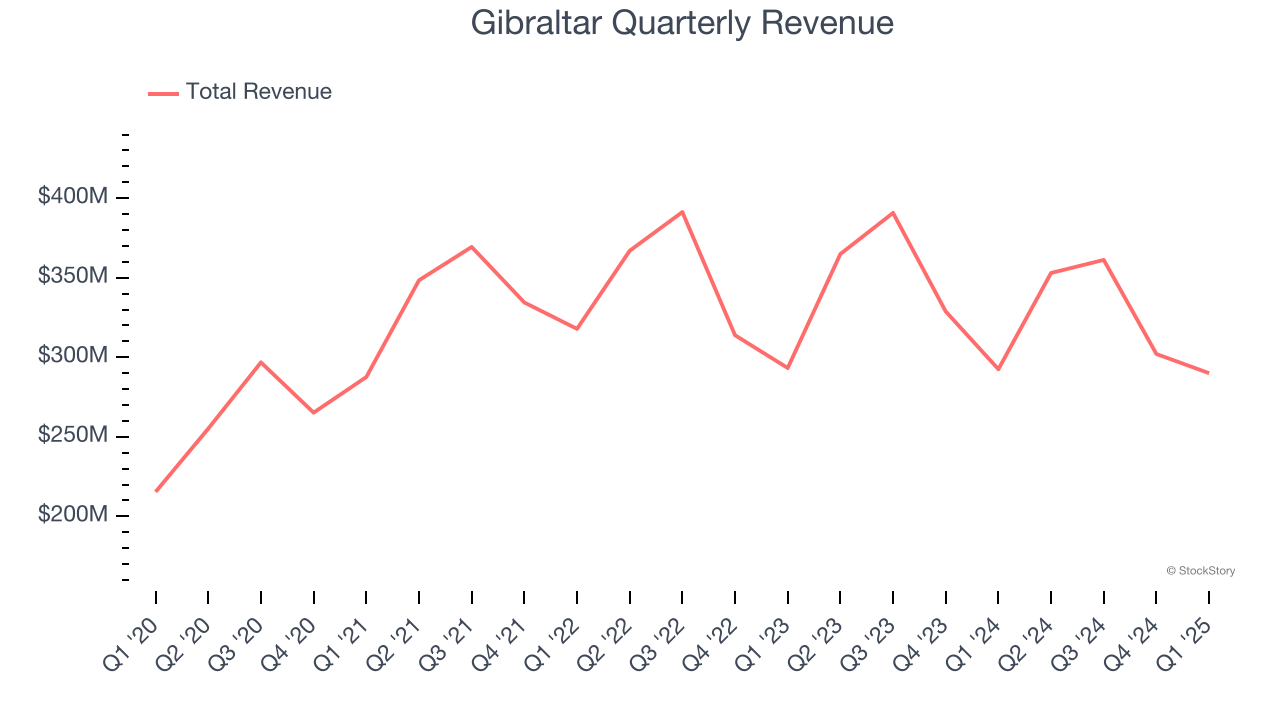
Long-term growth is the most important, but within industrials, a stretched historical view may miss new industry trends or demand cycles. Gibraltar’s performance shows it grew in the past but relinquished its gains over the last two years, as its revenue fell by 2.2% annually. 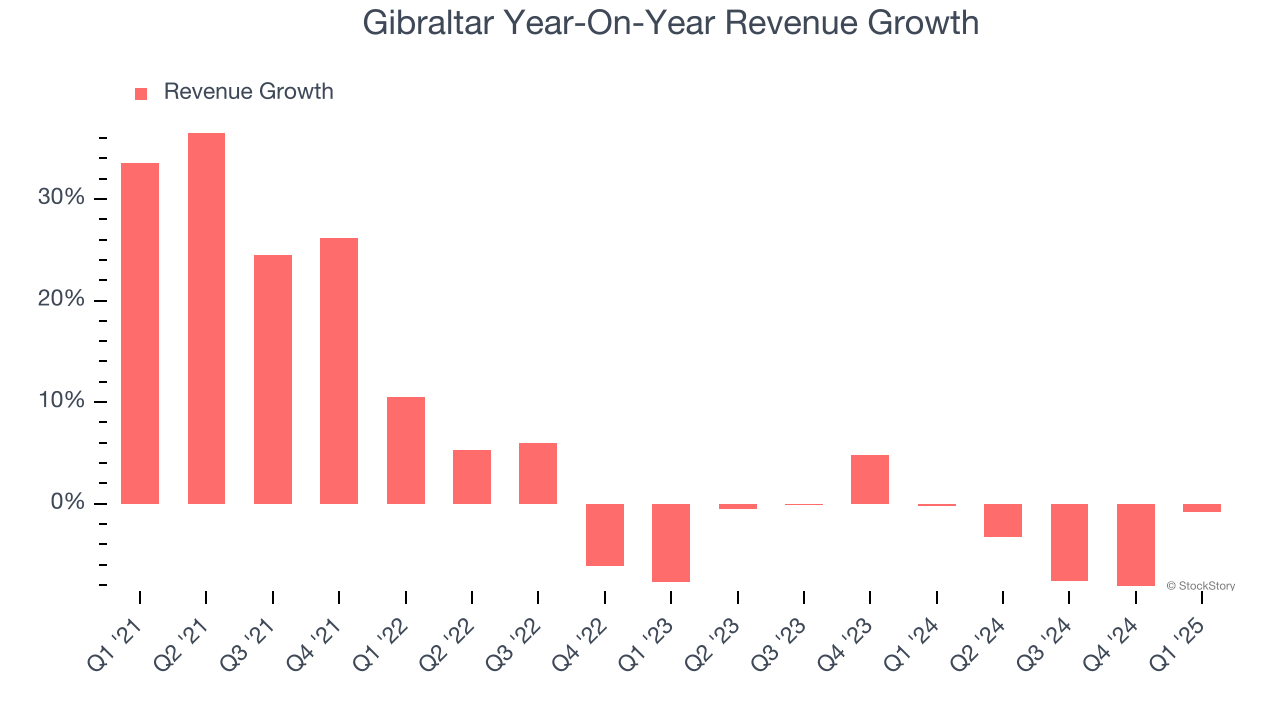
This quarter, Gibraltar missed Wall Street’s estimates and reported a rather uninspiring 0.9% year-on-year revenue decline, generating $290 million of revenue.
Looking ahead, sell-side analysts expect revenue to grow 10.3% over the next 12 months, an improvement versus the last two years. This projection is healthy and suggests its newer products and services will fuel better top-line performance.
Today’s young investors won’t have read the timeless lessons in Gorilla Game: Picking Winners In High Technology because it was written more than 20 years ago when Microsoft and Apple were first establishing their supremacy. But if we apply the same principles, then enterprise software stocks leveraging their own generative AI capabilities may well be the Gorillas of the future. So, in that spirit, we are excited to present our Special Free Report on a profitable, fast-growing enterprise software stock that is already riding the automation wave and looking to catch the generative AI next.
Operating Margin
Gibraltar has managed its cost base well over the last five years. It demonstrated solid profitability for an industrials business, producing an average operating margin of 10.8%. This result was particularly impressive because of its low gross margin, which is mostly a factor of what it sells and takes huge shifts to move meaningfully. Companies have more control over their operating margins, and it’s a show of well-managed operations if they’re high when gross margins are low.
Analyzing the trend in its profitability, Gibraltar’s operating margin rose by 1.3 percentage points over the last five years, as its sales growth gave it operating leverage.
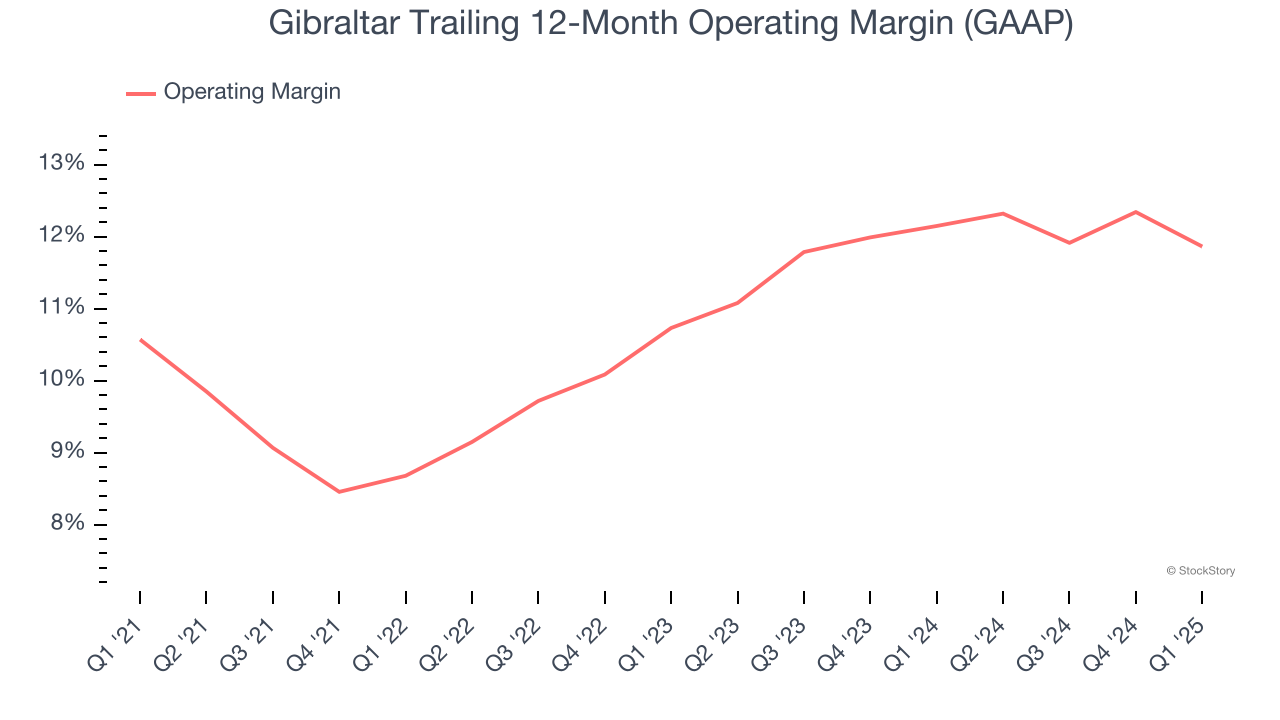
In Q1, Gibraltar generated an operating profit margin of 8.8%, down 2.2 percentage points year on year. Since Gibraltar’s operating margin decreased more than its gross margin, we can assume it was less efficient because expenses such as marketing, R&D, and administrative overhead increased.
Earnings Per Share
We track the long-term change in earnings per share (EPS) for the same reason as long-term revenue growth. Compared to revenue, however, EPS highlights whether a company’s growth is profitable.
Gibraltar’s full-year EPS grew at a decent 9.7% compounded annual growth rate over the last five years, better than the broader industrials sector.
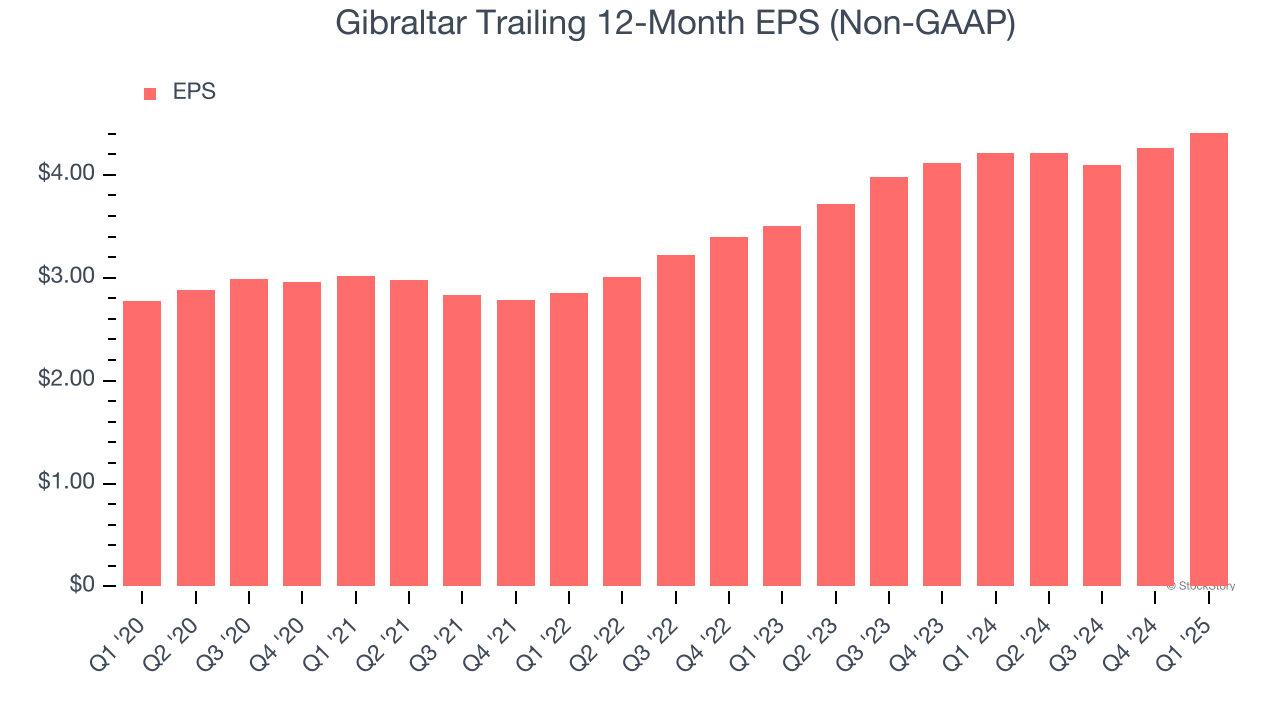
Like with revenue, we analyze EPS over a more recent period because it can provide insight into an emerging theme or development for the business.
Gibraltar’s EPS grew at a remarkable 12.2% compounded annual growth rate over the last two years, higher than its 2.2% annualized revenue declines. This tells us management adapted its cost structure in response to a challenging demand environment.
We can take a deeper look into Gibraltar’s earnings to better understand the drivers of its performance. A two-year view shows that Gibraltar has repurchased its stock, shrinking its share count by 1.8%. This tells us its EPS outperformed its revenue not because of increased operational efficiency but financial engineering, as buybacks boost per share earnings. 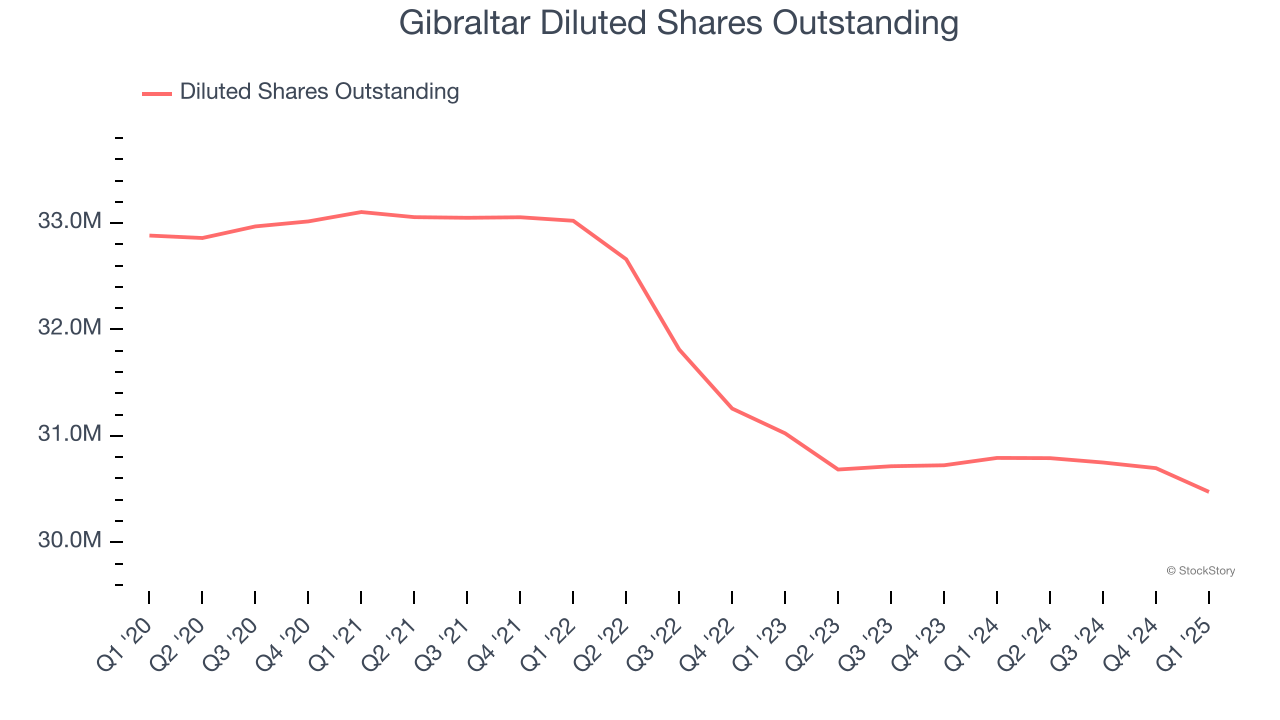
In Q1, Gibraltar reported EPS at $0.95, up from $0.80 in the same quarter last year. This print easily cleared analysts’ estimates, and shareholders should be content with the results. Over the next 12 months, Wall Street expects Gibraltar’s full-year EPS of $4.41 to grow 9.6%.
Key Takeaways from Gibraltar’s Q1 Results
We were impressed by how significantly Gibraltar blew past analysts’ EBITDA expectations this quarter. We were also glad its full-year EPS guidance trumped Wall Street’s estimates. On the other hand, its revenue missed significantly. The market seemed to focus on the negatives, and the stock traded down 1.1% to $52.21 immediately after reporting.
Should you buy the stock or not? When making that decision, it’s important to consider its valuation, business qualities, as well as what has happened in the latest quarter. We cover that in our actionable full research report which you can read here, it’s free.
